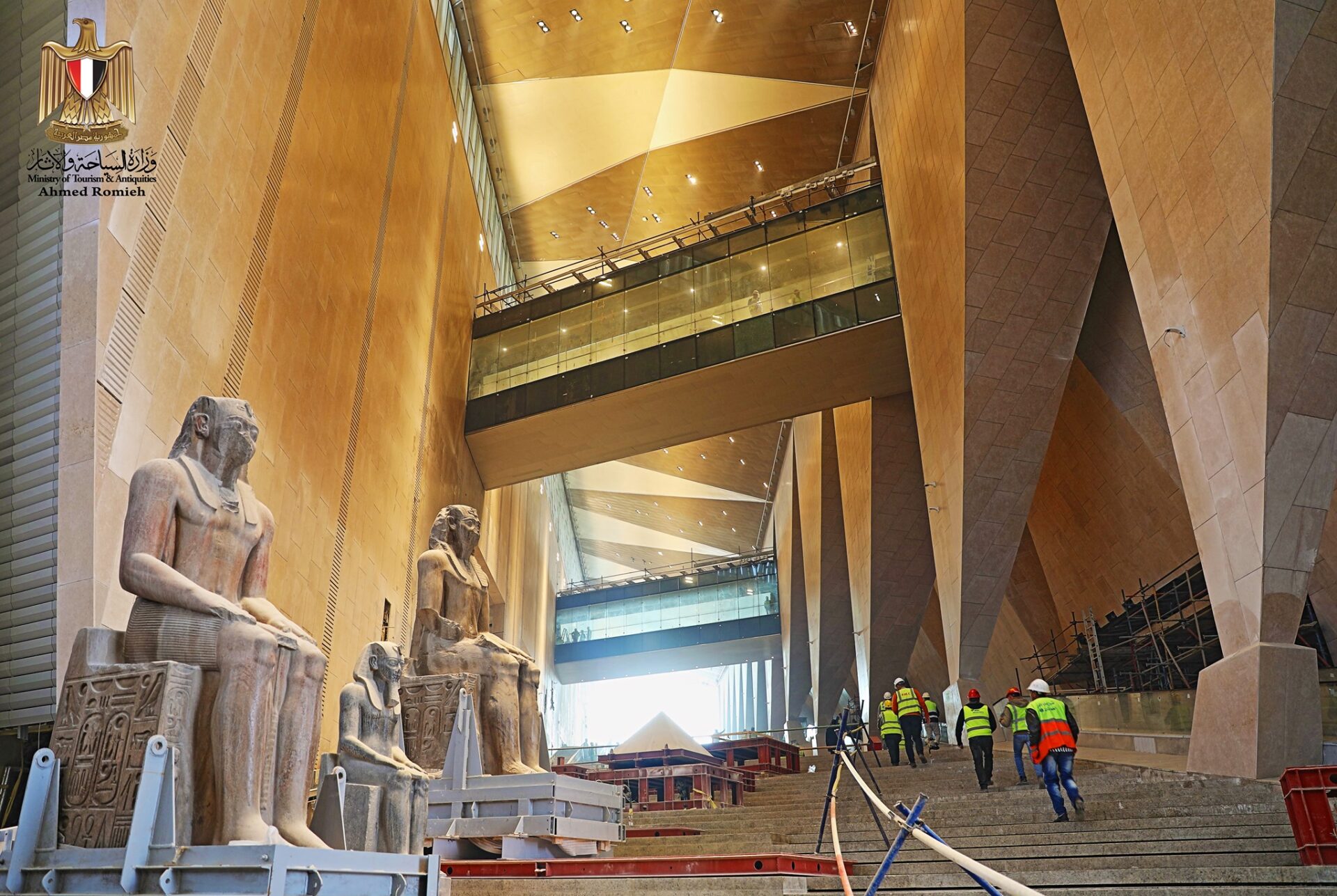The Great Egyptian Museum (GEM) is the most important cultural project in the world, according to Zahi Hawass, a prominent Egyptologist and former Minister of Antiquities.
Hawass noted that GEM is the most important project he started with Farouk Hosni, Egypt’s former culture minister, but it remained unfinished due to the January 25, 2011 revolution.
It is noteworthy that the museum, built on a total area of 117 feddans in Giza, is the largest museum in the world dedicated to one civilization, and its opening is eagerly awaited.
The museum will feature more than 5,000 artifacts from the tomb of Pharaoh Tutankhamun, which will be displayed together for the first time since their discovery. These artifacts will be displayed in two galleries dedicated to Pharaoh.
Hawass said a statue of Ramses II and an obelisk from his reign would be installed at the GEM, and visitors would be able to view statues of kings and queens.
“The boats found in the Khufu Pyramid [in Giza] will be transported to the museum along with three large galleries dedicated to important artifacts,” he added. “I really believe that the opening of this museum will be the most important cultural discovery in the world, because GEM proved to the world that Egypt really cares about its ancient artifacts. “
Earlier, Minister of Tourism and Antiquities Khaled El-Anani announced that GEM will be ready for opening by June 2021.
“We will invite heads of state from all over the world to the opening ceremony of the museum, so I think we will have to wait to see how things turn out for the new coronavirus pandemic (COVID-19),” said El-Anani. it will be somewhere in the second half of 2021. “
It is noteworthy that until the middle of the 19th century in Egypt there was no legislation concerning the trade in antiquities. There were thousands of artifacts, such as jewelry, statues, engravings, and even entire monuments, that were removed from their original environment to join private collections or various groups of museums around the world.
The first step in curbing the smuggling of Egyptian antiquities abroad was on August 15, 1835, when Egyptian Governor Mohammed Ali Pasha issued a decree banning the export and trade of all antiquities from the country.
The decree also included the construction of a building in Azbakia Park in Cairo as a house to preserve monuments.
The Law on the Protection of Antiquities № 117 of 1983 was amended, as amended in accordance with Law № 3 of 2010, Law № 61 of 2010 and the current Law № 91 of 2018.

